The next generation of Astrophysics | James Webb Space Telescope | Nasa's $10 billion dollar project
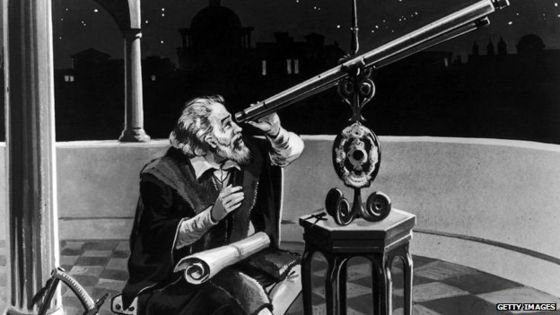
When Galileo first turned a spyglass to the heavens in 1610, he had trouble making out the rings of Saturn that are visible in inexpensive telescopes today. But, as you know, human had solved this problem by making an extensive progress in optics. And now we have another back draw, which is the atmospher of our planet earth itself.
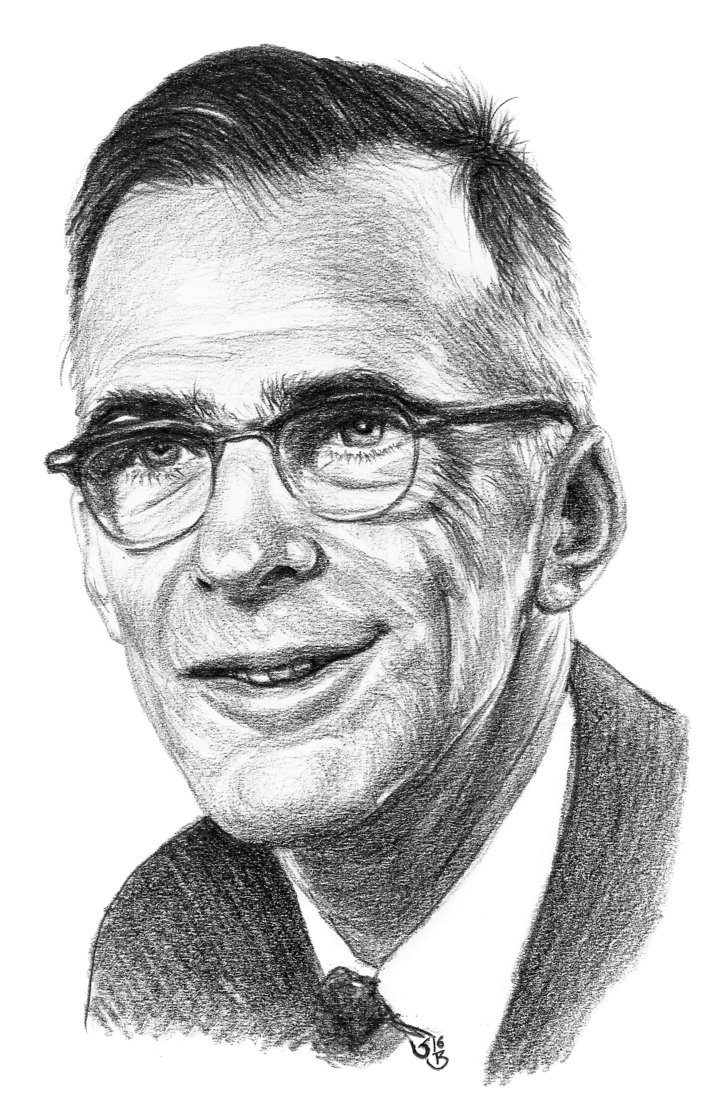
In 1946, Lyman Spitzer, a professor and researcher at Yale University, proposed that a space telescope would offer great advantages over ground-based observatories. His research paper explained that the Earth's atmosphere blurs and distorts light coming from stars. Even the most precise and advanced telescopes on the ground cannot escape this phenomenon, but a telescope in orbit can.
Meet the Hubble
In order to move from concept to reality, NASA with ESA (European Space Agency) started the mission of building the Hubble Space Telescope. Which was launched aboard Discovery on April 24, 1990. The effort costs about $1.5 billion back then. As it continued to return groundbreaking photos of the universe and help astronomers do valuable research til present days, it made us more ambitious and more curious about next phase of the physics. Hubble can view astronomical objects across a broad swath of the electromagnetic spectrum, from ultraviolet light, to visible, to near-infrared wavelengths. The space telescope can detect objects as faint as 31st magnitude, for ref our eye can see celestial objects as dim as sixth magnitude.

With all that the Hubble Space Telescope has done you might think there’s no limit to how far it can see. After all, thats not true. Empty space is illuminated by the light from thousands upon thousands of galaxies, some of these galaxies are so faint and distant that Hubble can barely see them. Because due to the expansion of the universe, the farther out we look in the Universe, the redder any object’s light will appear. That means those Photons will have infrared wavelengths. We’re not going to go much past a redshift of 8 or 9 with Hubble. Too bad, because there may be galaxies as far out as a redshift of 15 or 20! At those redshifts, the Universe was only one or two percent of its current age.
Meet the future
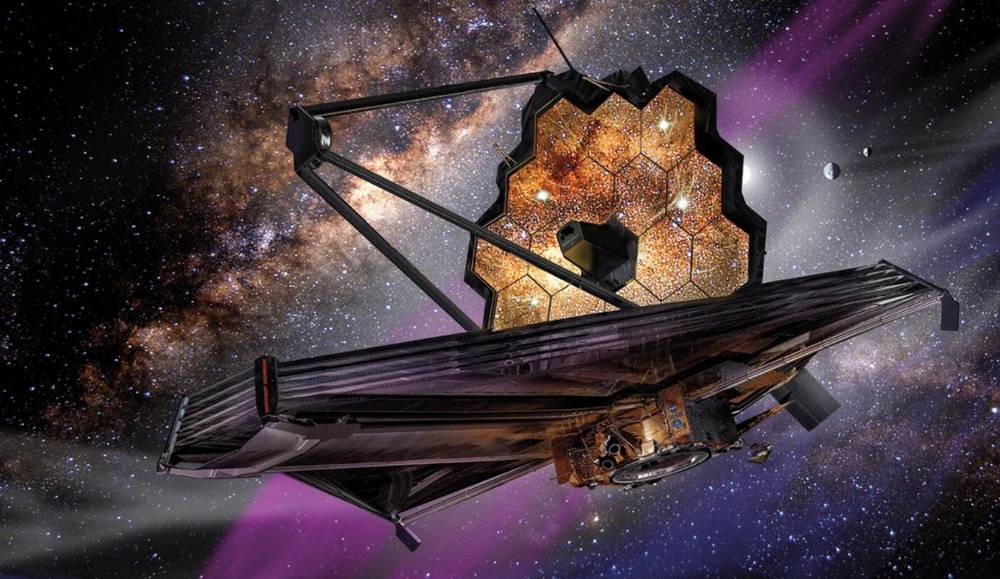
Whereas Hubble struggles to get to wavelengths as long as one micron (Near-Infrared), the James Webb Space Telescope (JWST) will get all the way down to about 30 microns (Far-Infrared) with better sensitivity than anything else that’s come before, with better resolution and some six times the light-gathering power of Hubble! NASA admitted that the project's costs might exceed the $8.8 billion price tag and could reach upto $10 billion USD.
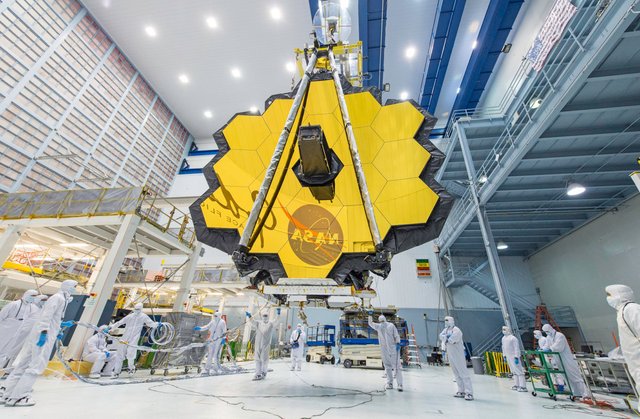
What is the James Webb Space Telescope?
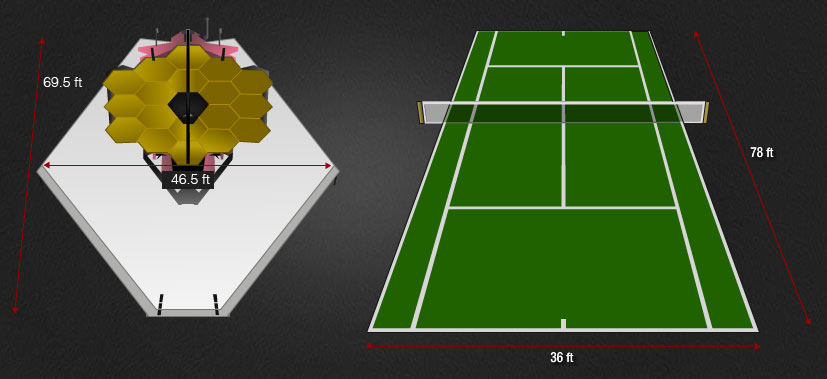
The James Webb Space Telescope, also called Webb or JWST, is a large, space-based observatory, optimized for infrared wavelengths, which will complement and extend the discoveries of the Hubble Space Telescope. The longer wavelengths enable Webb to look further back in time to find the first galaxies that formed in the early Universe, and to peer inside dust clouds where stars and planetary systems are forming today.
The most important size of a telescope is the diameter of the primary mirror, which will be about 6.5 meters (21 feet) for Webb. This is about 2.75 times larger in diameter than Hubble, or about 6 times larger in area. The Webb will have a mass of approximately 6,500 kg, with a weight of 14,300 lbs on Earth (in orbit, everything is weightless), a little more than half the mass of Hubble.
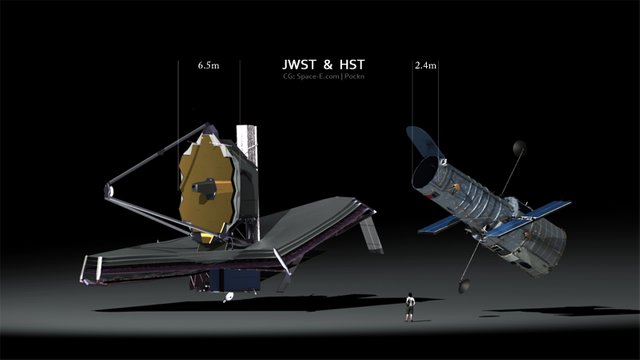
The largest structure of Webb will be its sunshade, which must be able to shield the deployed primary mirror and the tower that holds the secondary mirror. The sunshade is approximately the size of a tennis court. The sunshield have five layers rather than one thick one. Each successive layer of the sunshield is cooler than the one below. The heat radiates out from between the layers, and the vacuum between the layers is a very good insulator. One big thick sunshield would conduct the heat from the bottom to the top more than 5 layers separated by vacuum.
Who is JWST named after?
The James Webb Space Telescope was originally called the "Next Generation Space Telescope," or NGST. On 10 September 2002, the Next Generation Space Telescope was named in honor of James E. Webb, NASA's second administrator.
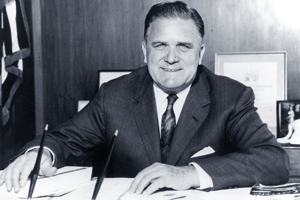
The team
The National Aeronautics and Space Administration (NASA) leads an international partnership that includes the European Space Agency and the Canadian Space Agency. In 2002, NASA selected Northrop Grumman as prime contractor to develop the James Webb Space Telescope.

Northrop Grumman will design and build the deployable sunshield, provide the spacecraft and integrate the total system.The observatory subsystems are developed by a Northrop Grumman-led team with vast experience in developing space-based observatories. Ball Aerospace provides the telescope's optical design and mirrors, and the wavefront sensing and control design and algorithms. Harris Corporation integrates and tests the optical telescope. ATK provides the telescope's composite structures.
Technologies that will be used at JWST
Sunshield membrane material, near-infrared and mid-infrared detectors, lightweight cryogenic mirrors, microshutter arrays, cryogenic detector readout application-specific integrated circuits, cryogenic heat switches, wavefront sensing and control, large precision cryogenic structure, the MIRI cryocooler and the NIRCam.
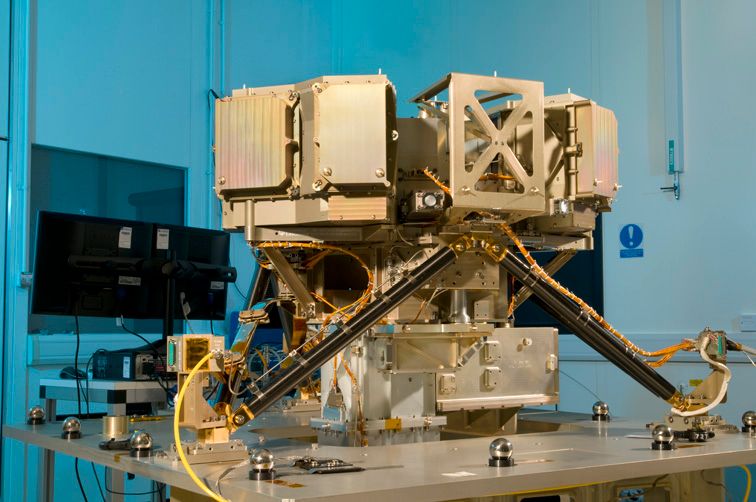
The Webb mission
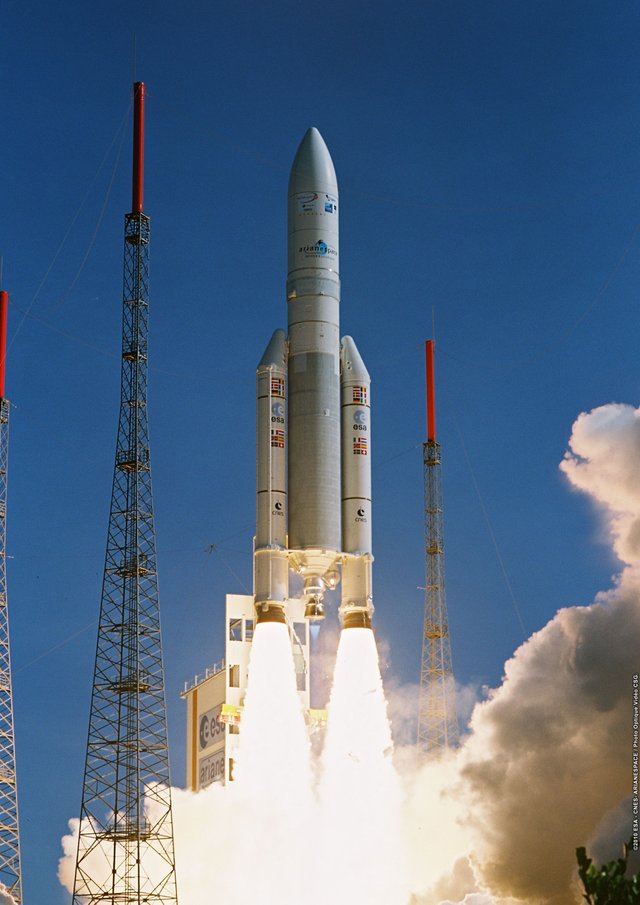
Webb is planned to launch in 2020. JWST will be launched on an Ariane 5 ECA rocket. The launch vehicle is part of the European contribution to the mission. Webb is designed to have a mission lifetime of not less than 5-1/2 years after launch, with the goal of having a lifetime greater than 10 years. Webb will be operated at the second Sun-Earth Lagrange point, located approximately 1 million miles (1.5 million km) away from the Earth, and will therefore be beyond the reach of any crewed vehicle. That is why Webb is not serviceable.
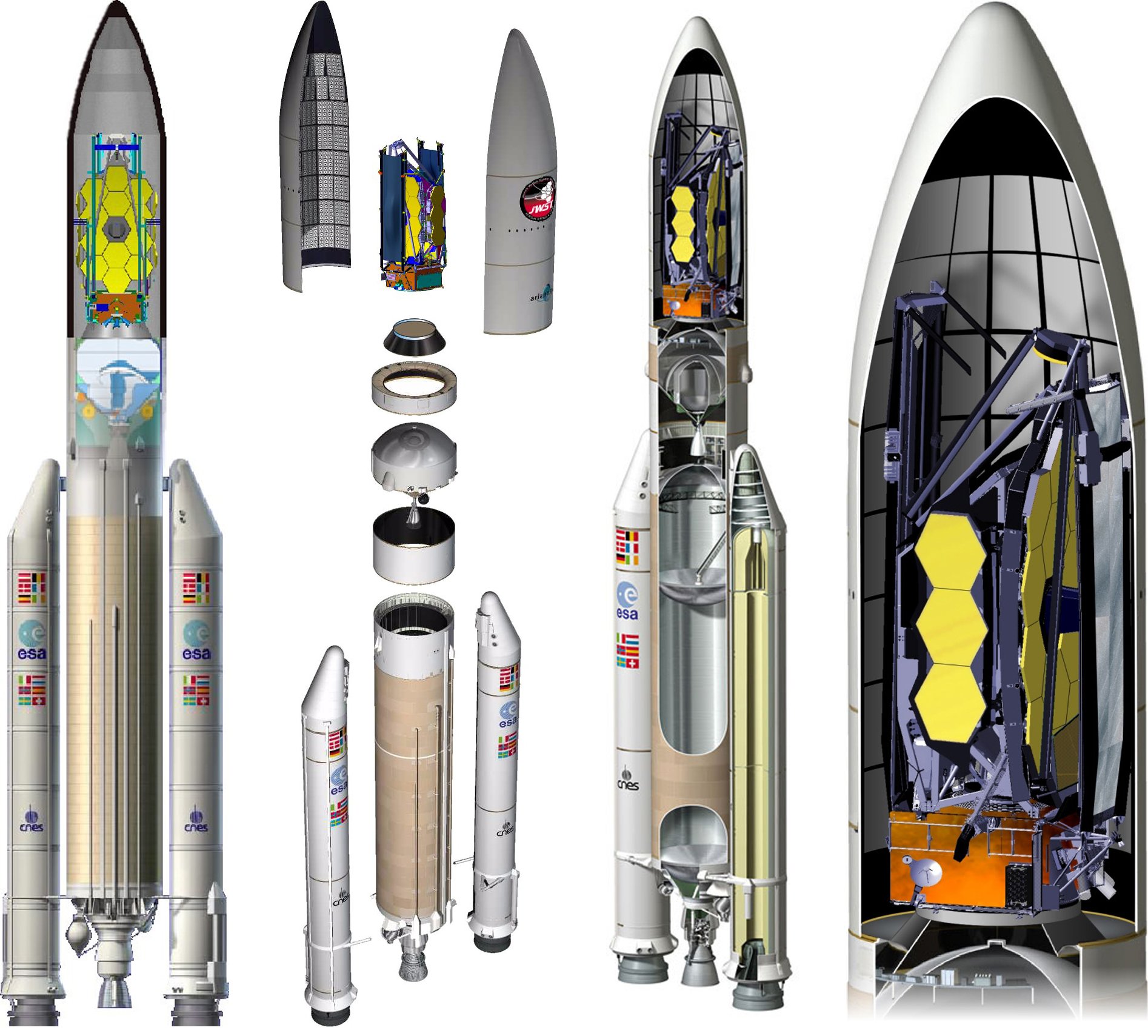
Starting at liftoff, the Ariane rocket will provide thrust for a little over 8 minutes. Webb will separate from the Ariane V launch vehicle a half hour after launch and NASA will deploy the solar array immediately afterward. Two hours after launch NASA will deploy the high gain antenna. About ten and a half hours after launch, Webb will pass the Moon's orbit. In the first month full sunshield deployment with unfolding and tensioning of the membranes can then be initiated. Then NASA will deploy the secondary mirror, followed by the side wings of the primary mirror. At 33 days after launch they will turn on and operate the Fine Guidance Sensor, then NIRCam and NIRSpec. After six months Webb will begin its science mission and start to conduct routine science operations.
Why so far?

Webb requires a distant orbit for several reasons. Webb will observe primarily the infrared light from faint and very distant objects. Infrared is heat radiation, so all warm things, including telescopes, emit infrared light. To avoid swamping the very faint astronomical signals with radiation from the telescope, the telescope and its instruments must be very cold. Webb's operating temperature is less than 50 degrees above absolute zero: 50 Kelvin (-223° C or -370° F). Therefore, Webb has a large shield that blocks the light from the Sun and Earth (and the Moon), which otherwise would heat up the telescope, and interfere with the observations. Webb will be placed in orbit around the Sun at a special location where its sunshield can block both the Sun and Earth (and Moon) all the time.
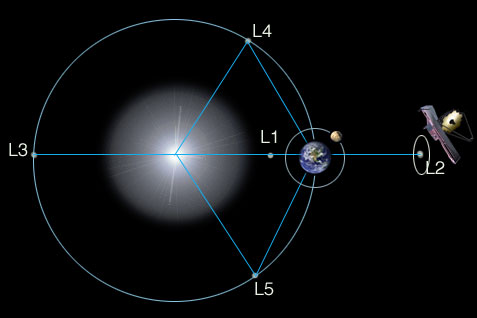
For the love of Physics
Stars and planets that are just forming lie hidden behind cocoons of dust that absorb visible light. The same is true for the very center of our galaxy. However, infrared light emitted by these regions can penetrate this dusty shroud and reveal what is inside. Because of the time it takes light to travel, the further away an object is, the further back in time we are looking. One reason Webb will be able to see the first galaxies is because it is an infrared telescope.
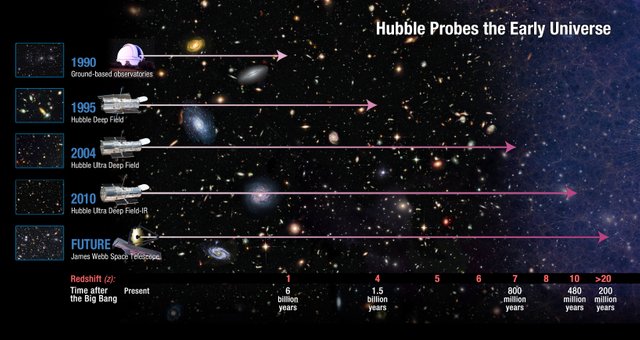
The universe and thus the galaxies in it, is expanding. When we talk about the most distant objects, Einstein’s General Relatively actually comes into play. It tells us that the expansion of the universe means it is the space between objects that actually stretches, causing objects (galaxies) to move away from each other. Furthermore, any light in that space will also stretch, shifting that light's wavelength to longer wavelengths. This can make distant objects very dim (or invisible) at visible wavelengths of light, because that light reaches us as infrared light. Infrared telescopes, like Webb, are ideal for observing these early galaxies. To see these faint objects, it must be able to detect things that are ten billion times as faint as the faintest stars visible without a telescope. This is 10 to 100 times fainter than Hubble can see.
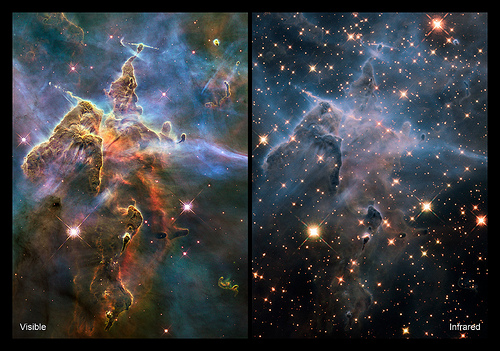
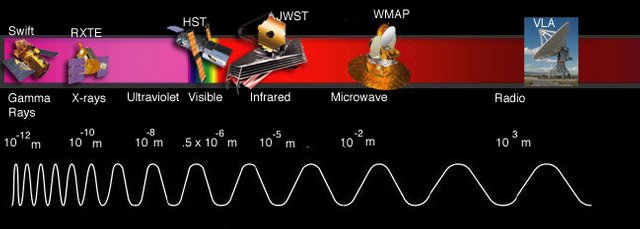
With some infrared capability, Hubble is capturing gorgeous images, like this one of the Horsehead Nebula.
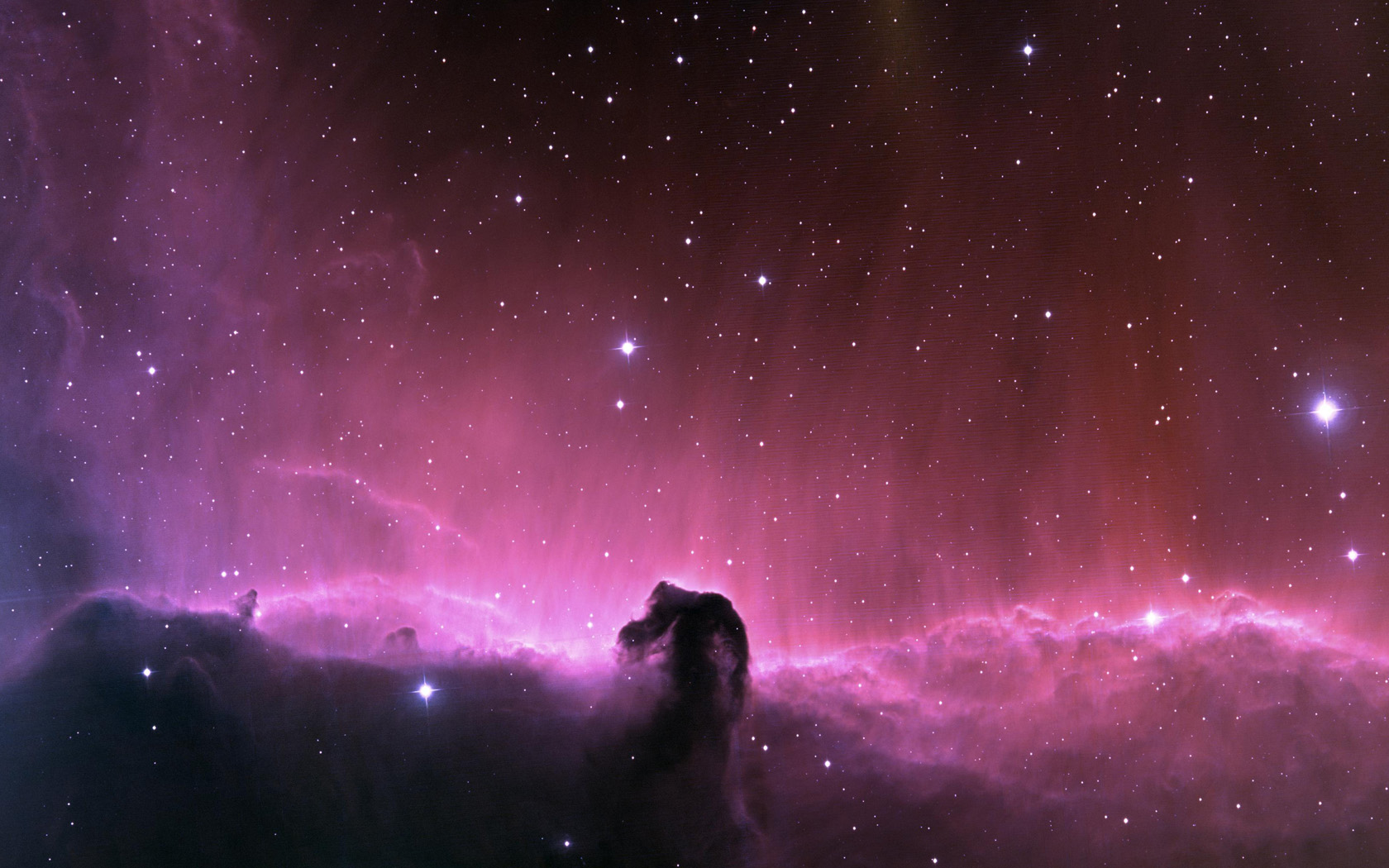
Webb is optimized to see deeper into the infrared than Hubble, and has a much larger mirror, as well as state of the art detectors. Its imagery will be detailed and spectacular.
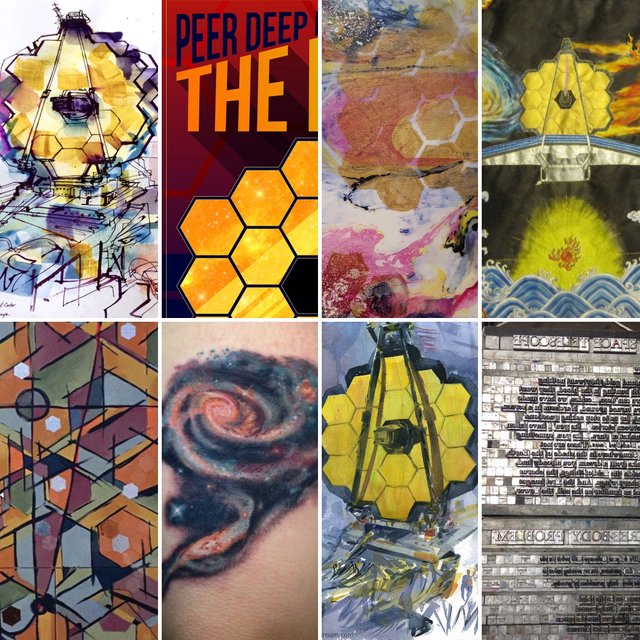
We all are waiting for the next generation.
Images & Information from-
https://jwst.nasa.gov
https://www.nasa.gov
https://en.wikipedia.org/wiki/James_Webb_Space_Telescope
http://sci.esa.int/jwst/